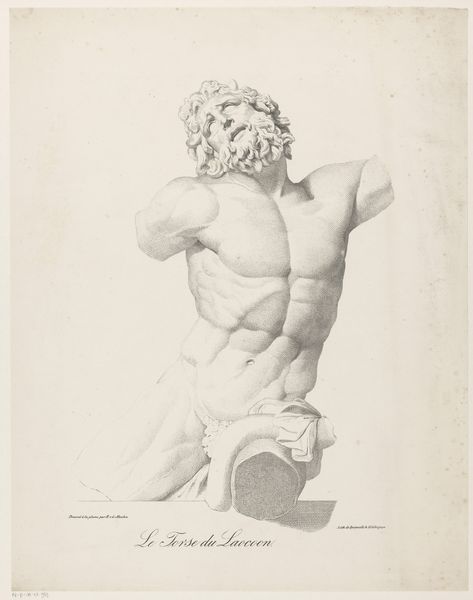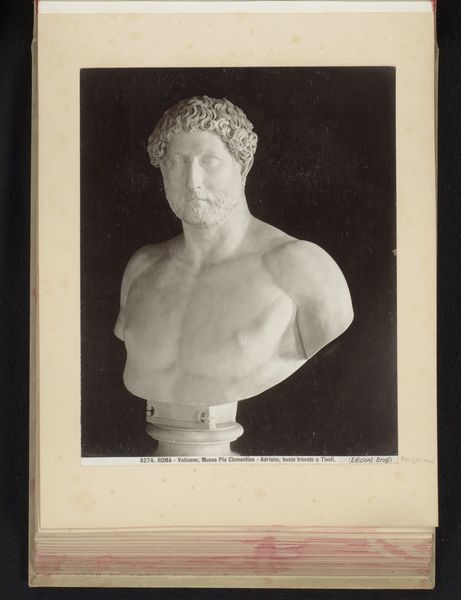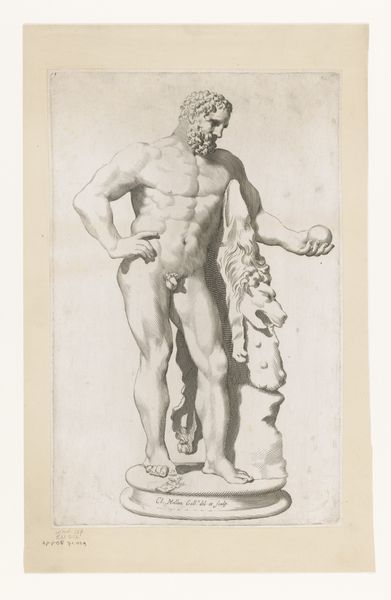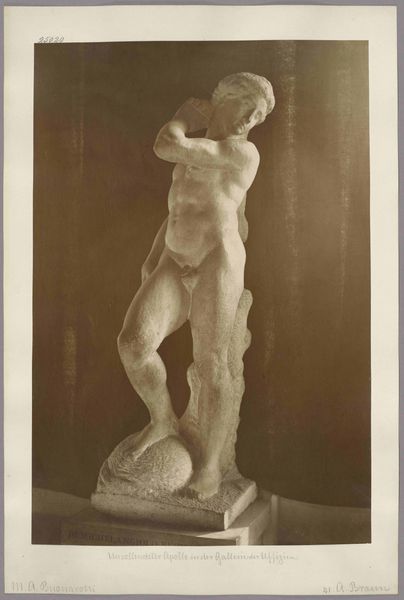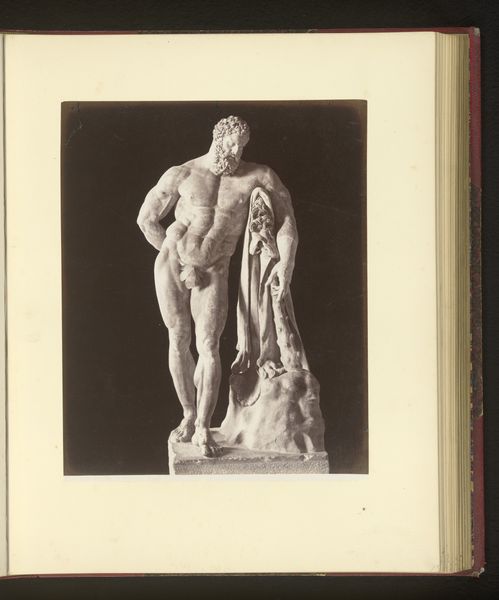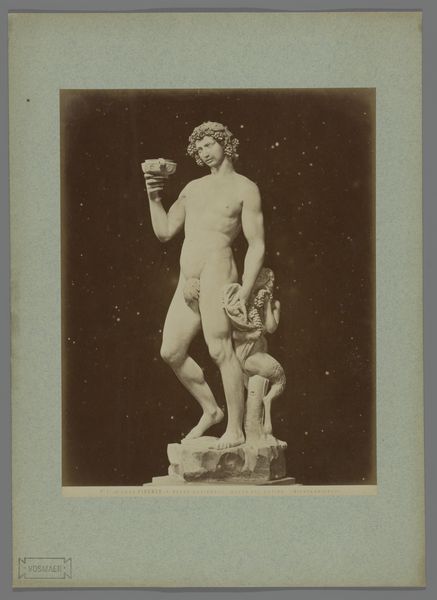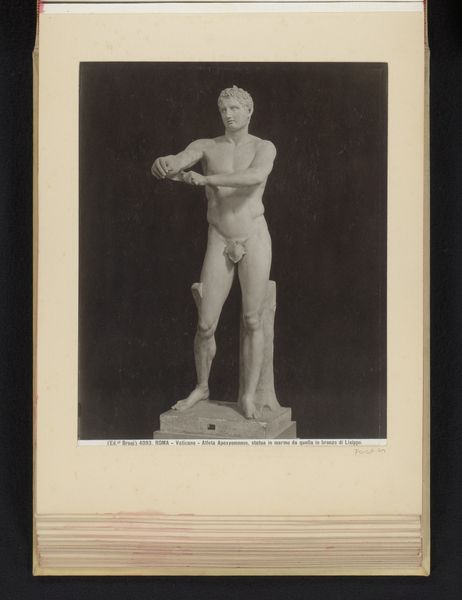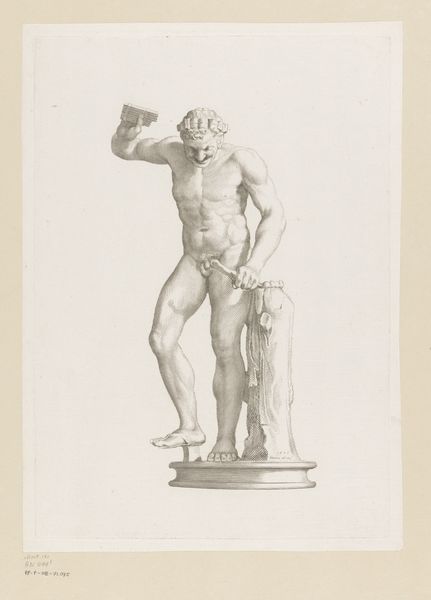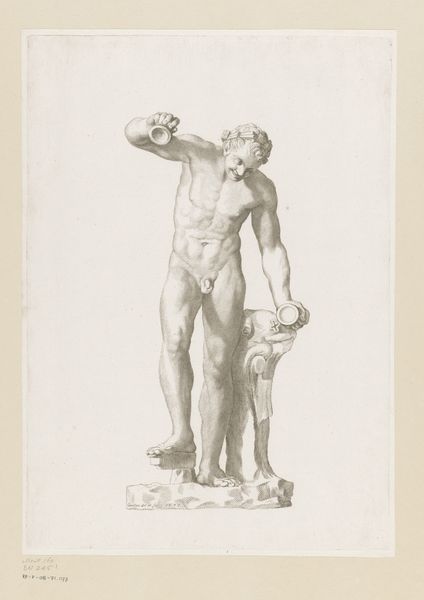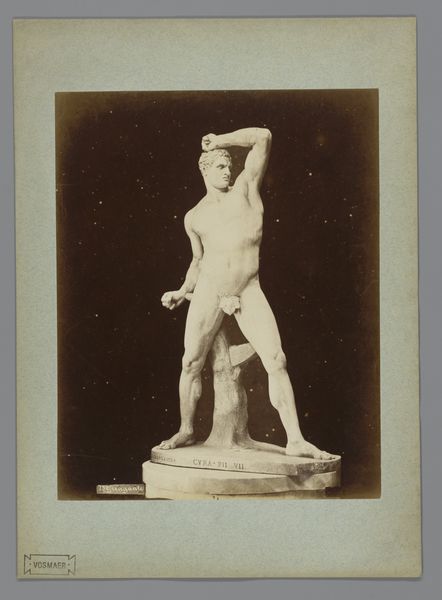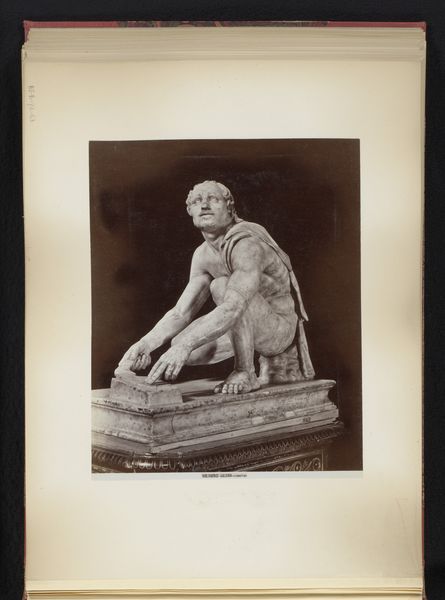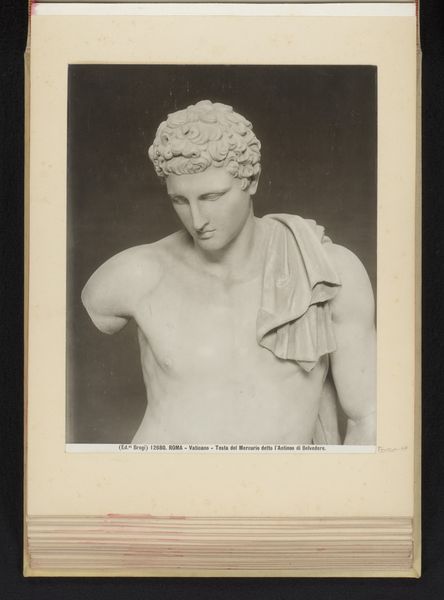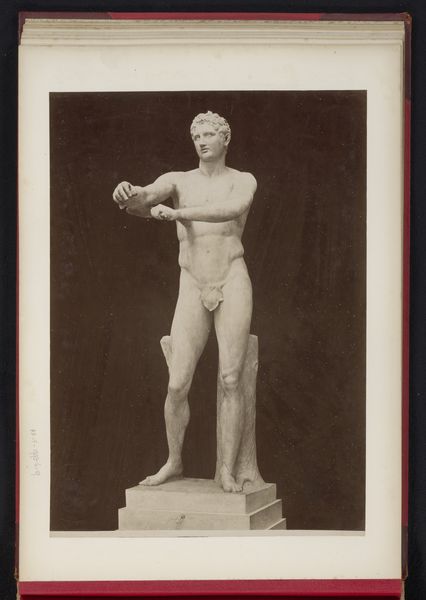
photography, sculpture
#
portrait
#
greek-and-roman-art
#
classical-realism
#
figuration
#
photography
#
portrait reference
#
sculpture
Dimensions: height 250 mm, width 197 mm
Copyright: Rijks Museum: Open Domain
Editor: This is a photograph, taken before 1907 by Edizione Brogi, of a portion of the Laocoön group, a sculpture residing in the Vatican Museums. It depicts Laocoön in anguish, his face contorted in pain. The sculpture and photo are intense, almost melodramatic. What does it bring to mind for you? Curator: The Laocoön has had such a complex after life! Rediscovered in 1506, it became *the* classical sculpture, immediately inspiring artists. We see the powerful influence of the Vatican in shaping taste; Popes Julius II and later, were active participants in establishing its value and its place in the western canon. The sculpture embodied "good taste", a symbol of cultural and political power. Editor: So, it was deemed valuable from its discovery? Did everyone agree? Curator: Not quite. Consider how interpretations changed over time. Initially celebrated for its anatomical accuracy, some later critiqued its realism, finding its drama excessive. These shifts reflect changes in societal values and aesthetic ideals. Think about the museum’s role too; housing and displaying such artifacts impacts its narrative. Museums elevate certain objects to the status of 'art', imbuing them with symbolic meaning, something to always consider! Editor: I never considered how much museums could shape the narrative. What do you think of the fact that we’re viewing it as a photograph? How does that change things? Curator: That’s important. Photography further detaches it. What was once Roman/Greek becomes photographic evidence for others. Its social role evolves! Editor: So, thinking about that wider reception makes me rethink just my own initial reaction to it. Thank you! Curator: Absolutely, it shows how powerful even fragments can be within evolving cultural contexts!
Comments
No comments
Be the first to comment and join the conversation on the ultimate creative platform.
